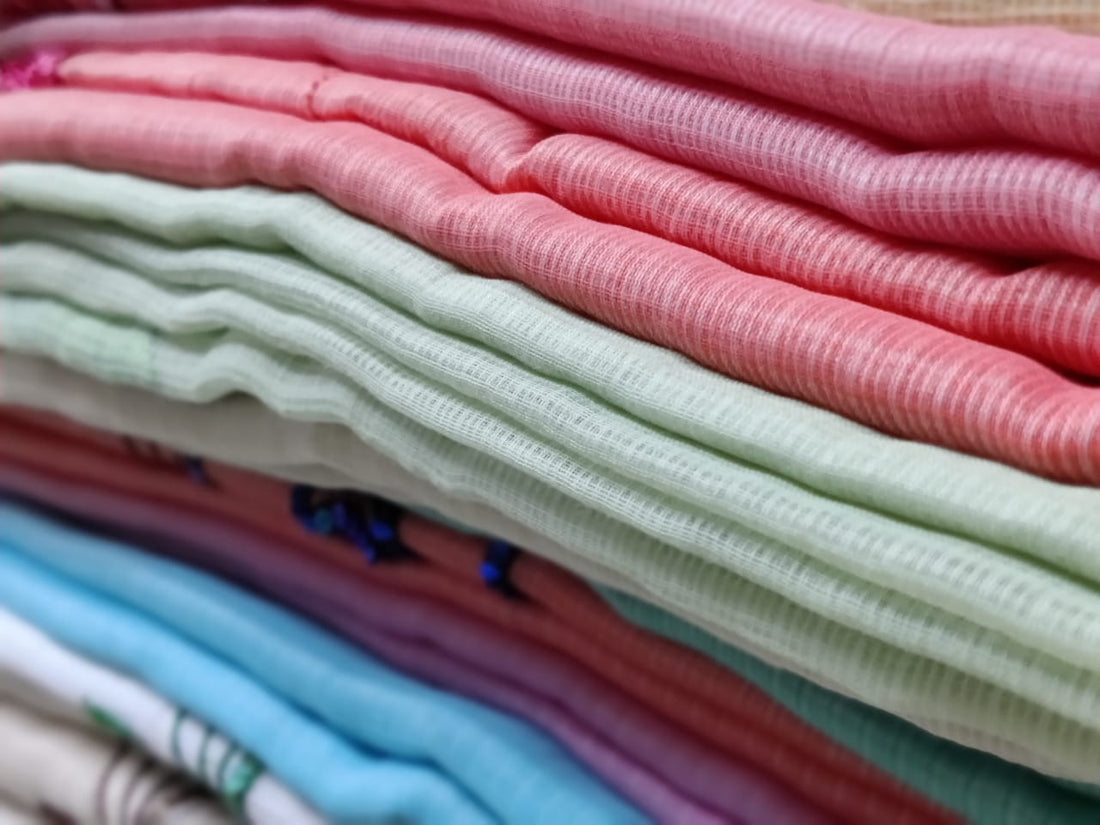Kota Doria or Kota Doriya is a traditional textile fabric that originated in the city of Kota in the state of Rajasthan, India. It is known for its unique weaving technique and delicate, lightweight texture. Kota Doria fabric is primarily made from a blend of cotton and silk, which gives it a translucent appearance and a slight sheen.

The history of Kota Doria can be traced back to the late 17th century when it was introduced by Rao Kishore Singh, a general in the Mughal army. He brought weavers from the town of Mysore to Kota and encouraged them to create this lightweight, breathable fabric suitable for the hot and arid climate of Rajasthan.
The distinctive feature of Kota Doria is its open-weave pattern called "khats." These khats are created by using a traditional pit loom, where the warp and weft threads are interwoven in a way that forms small square patterns. These tiny squares not only enhance the aesthetics of the fabric but also make it airy and comfortable to wear.
Kota Doria fabrics are known for their versatility and are used to create a wide range of clothing such as sarees, salwar suits, dupattas (scarves), and other traditional and contemporary garments. The fabric is favored for its lightweight feel, breathability, and elegant drape, making it suitable for both casual and formal occasions.
Kota Doria fabrics often feature intricate motifs and designs inspired by nature, geometric patterns, and traditional Rajasthani artwork. The color palette of Kota Doria fabrics is vibrant and diverse, reflecting the rich cultural heritage of Rajasthan.
Over the years, Kota Doria has gained recognition not only within India but also internationally. It is highly regarded for its craftsmanship and has been awarded the Geographical Indication (GI) tag, certifying its authenticity and origin.
Kota Doria fabrics are popular among fashion enthusiasts and are frequently used by designers in their collections. The demand for Kota Doria products has led to the establishment of Kota Doria weaving clusters and cooperatives, supporting the livelihoods of weavers and preserving the traditional art form.

